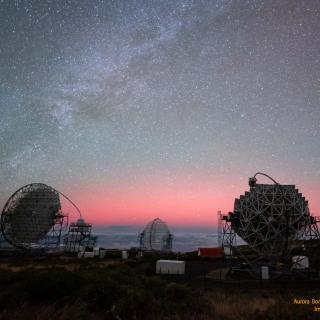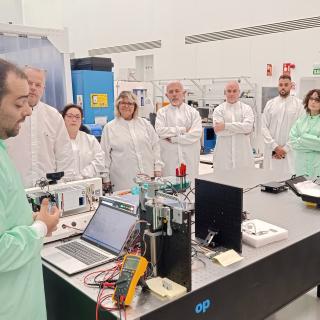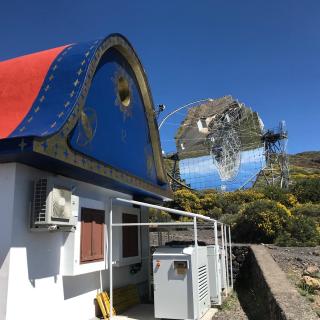It may interest you
-
 On January 7, 2025, the European Commission established the Cherenkov Telescope Array Observatory (CTAO) as a European Research Infrastructure Consortium (ERIC), furthering its mission to become the world’s largest and most powerful observatory for gamma-ray astronomy. The creation of the CTAO ERIC will enable the Observatory's construction to advance rapidly and provide a framework for distributing its data worldwide, significantly accelerating its progress toward scientific discovery. “The ERIC will streamline the construction and operation of the Observatory in a way that will undoubtedlyAdvertised on
On January 7, 2025, the European Commission established the Cherenkov Telescope Array Observatory (CTAO) as a European Research Infrastructure Consortium (ERIC), furthering its mission to become the world’s largest and most powerful observatory for gamma-ray astronomy. The creation of the CTAO ERIC will enable the Observatory's construction to advance rapidly and provide a framework for distributing its data worldwide, significantly accelerating its progress toward scientific discovery. “The ERIC will streamline the construction and operation of the Observatory in a way that will undoubtedlyAdvertised on -
 As part of Open Government Week, which is being held from 19 to 25 May, the Instituto de Astrofísica de Canarias (IAC) has organised open days at its facilities in La Laguna (Tenerife) to bring its research and technological activity closer to the public. This international initiative aims to promote the values of transparency, citizen participation and accountability in public administrations. The visits, in which dozens of people took part in different shifts, were held on Monday 19 May at the IAC headquarters and on Tuesday 20 May at the IACTEC building, the Institute's technological andAdvertised on
As part of Open Government Week, which is being held from 19 to 25 May, the Instituto de Astrofísica de Canarias (IAC) has organised open days at its facilities in La Laguna (Tenerife) to bring its research and technological activity closer to the public. This international initiative aims to promote the values of transparency, citizen participation and accountability in public administrations. The visits, in which dozens of people took part in different shifts, were held on Monday 19 May at the IAC headquarters and on Tuesday 20 May at the IACTEC building, the Institute's technological andAdvertised on -
 La casa de control de los telescopios MAGIC , en el Observatorio del Roque de los Muchachos (ORM), en La Palma, luce desde hoy una nueva imagen, la del “Enano Estelar”, en homenaje a una de las figuras más queridas de las Fiestas Lustrales de la Bajada de la Virgen de las Nieves . La intervención artística, promovida por la colaboración científica MAGIC, ha sido presentada en un acto institucional que ha reunido a autoridades locales, representantes del mundo científico y medios de comunicación. La transformación del edificio —cuya singular cubierta, obra del arquitecto José Luis PortaAdvertised on
La casa de control de los telescopios MAGIC , en el Observatorio del Roque de los Muchachos (ORM), en La Palma, luce desde hoy una nueva imagen, la del “Enano Estelar”, en homenaje a una de las figuras más queridas de las Fiestas Lustrales de la Bajada de la Virgen de las Nieves . La intervención artística, promovida por la colaboración científica MAGIC, ha sido presentada en un acto institucional que ha reunido a autoridades locales, representantes del mundo científico y medios de comunicación. La transformación del edificio —cuya singular cubierta, obra del arquitecto José Luis PortaAdvertised on